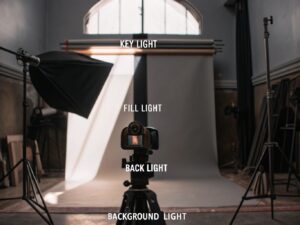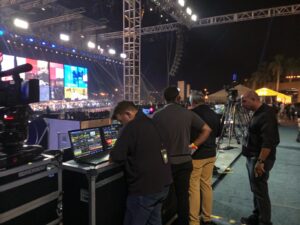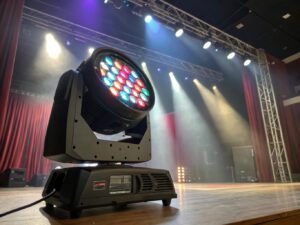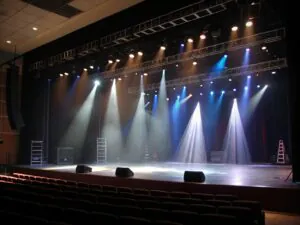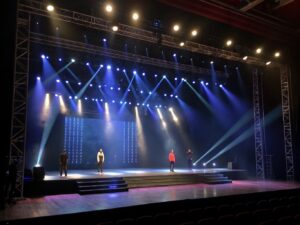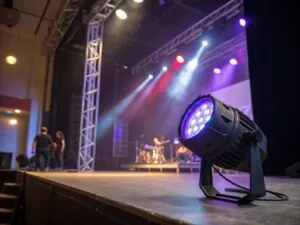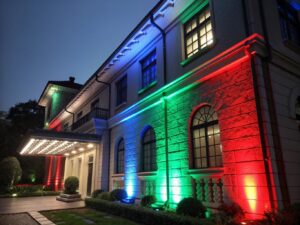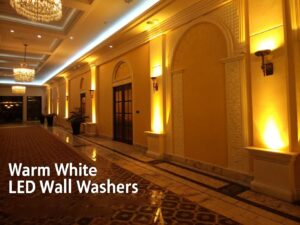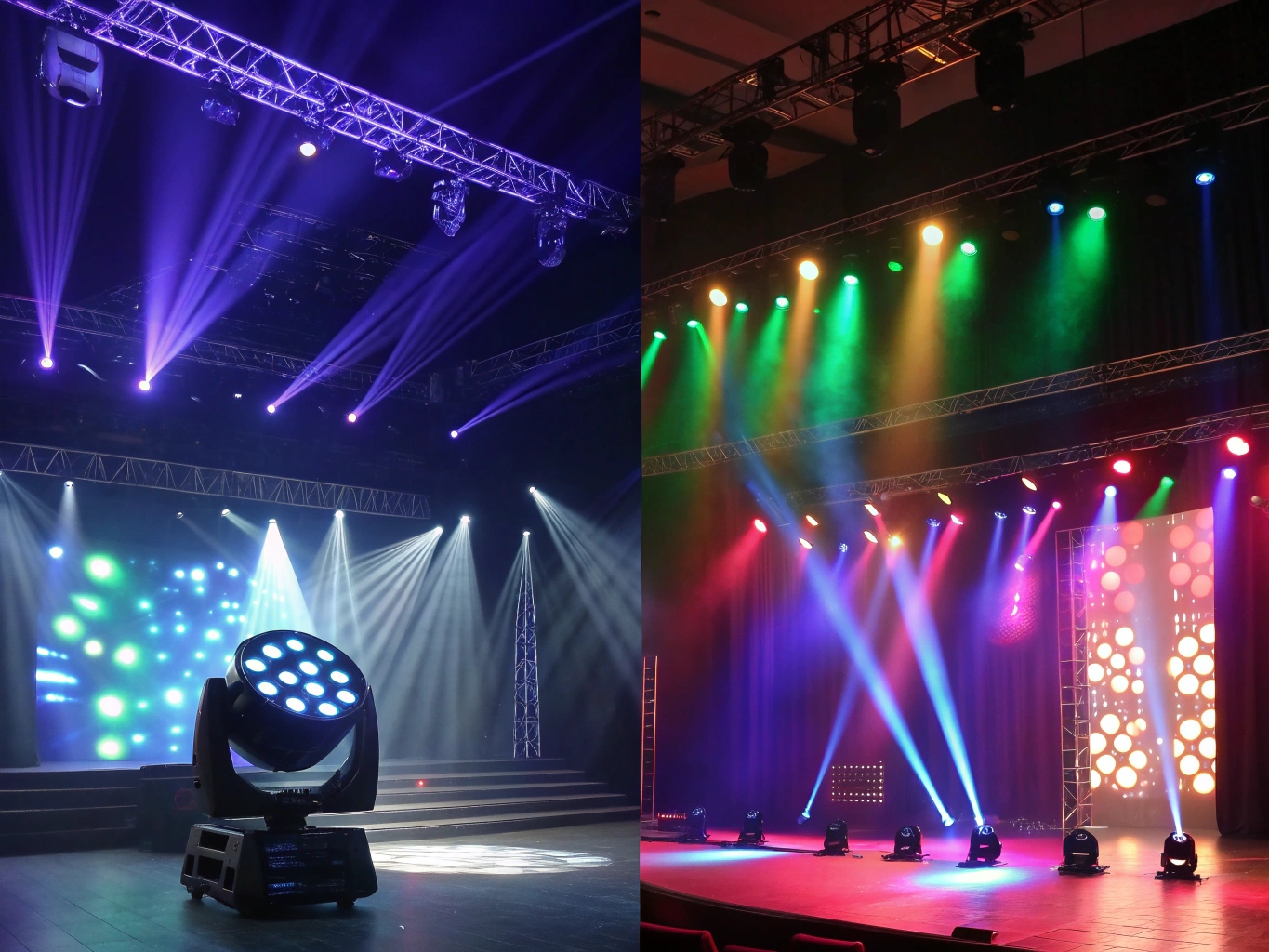
How Do You Master the Fundamentals of LED Stage Lighting?
Buying expensive LED lights doesn't guarantee a great show. Without understanding the core principles, your stage can look flat, unprofessional, and fail to create the right mood for your audience.
To master LED stage lighting, you must understand the different roles of lights (key, wash, effect), apply the three-point lighting rule1 for perfect visibility, and know which versatile fixtures, like LED PARs and Moving Heads, are the most popular choices.

After 19 years in this business, from being a technician on the ground to leading Monalight, I've learned that technology is only half the story. The other half is technique. I've seen crews with the newest gear create forgettable shows because they missed the basics. My philosophy has always been "quality is life, innovation is soul," and that applies to knowledge as much as it does to hardware. Understanding why you use a certain light in a certain place is the first step to creating truly reliable and creative lighting solutions.
What are the best lights for staging?
You're faced with endless options: spots, washes, beams, strobes. Buying the wrong type of light for the job is a costly mistake that can compromise your entire production.
There is no single "best" light for a stage. The best lighting is creating a complete toolkit—a balanced combination of Key lights (like Profiles), Wash lights (like PARs), and Effect lights2 (like Moving Heads) that work together.

A lighting rig is like a painter's palette; you need more than one color to create a masterpiece. The key is to have the right tool for each of the three primary jobs in lighting. A professional technician like Nick knows that he can't light a concert with only wash lights, nor can he light a theater piece with only strobes. It’s the skillful combination of these fixtures that creates a professional and polished look. At Monalight, we design fixtures that excel in these specific roles, but we know the real magic happens when they are used together.
The Essential Lighting Staging Toolkit
| Light Category | Primary Job | Best LED Fixture | Why It's Essential |
|---|---|---|---|
| Key/Spot Light | To see the performers clearly and guide audience focus. | LED Profile/Ellipsoidal | Provides a sharp-edged, controllable beam to make your subject stand out. |
| Wash Light | To cover large areas with an even field of color or light. | LED PAR Can | Creates the foundational mood and atmosphere of the scene. |
| Effect Light | To add energy, movement, texture, and excitement. | LED Moving Head | Creates the "wow" factor and dynamic looks that captivate an audience. |
What are LED stage lights used for?
Many people think LED lights are just for creating vibrant colors. While they excel at this, seeing them only as color tools severely limits their potential and your creative possibilities.
LED stage lights are used for every aspect of stage illumination: providing clear visibility3 (key light), creating atmosphere with color (wash light), adding energy with movement and patterns (effects), and highlighting specific performers or set pieces.
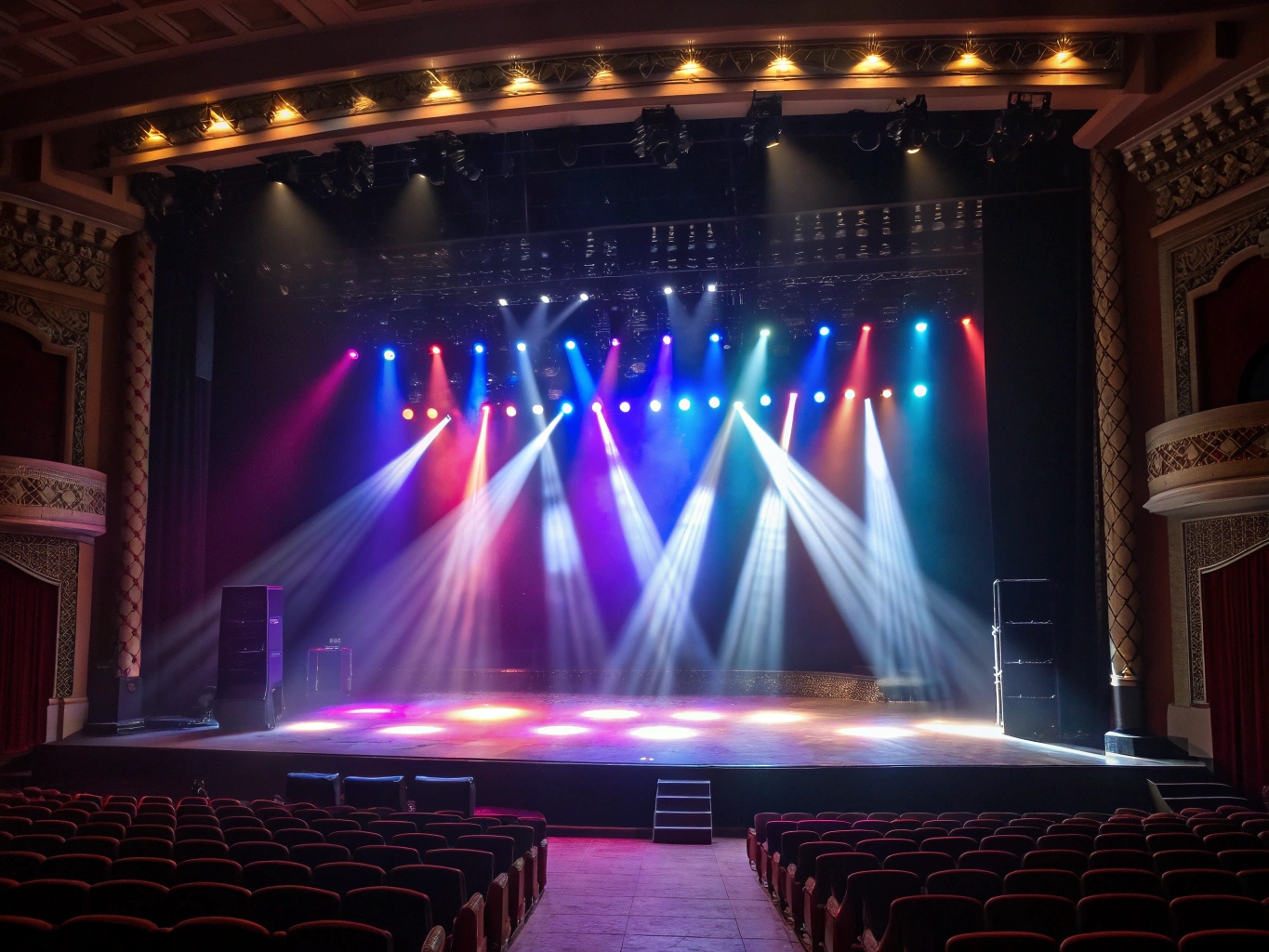
The move to LED technology revolutionized our industry because it allowed a single fixture to be more versatile. This commitment to innovation is what drives us. Previously, you needed a different light for every job. Now, a high-quality LED fixture can serve multiple purposes, but its core application still falls into one of a few key categories. Understanding these functions allows you to build your lighting design with purpose. You don't just add lights; you add visibility, atmosphere, and dynamics. This addresses a key challenge for technicians like Nick, who need to maximize luminance and effect from every single fixture in the rig.
Here's how these uses break down:
- Visibility: The most fundamental job. Using LED Profile spots to light performers ensures the audience can see faces and expressions clearly. Without this, everything else is pointless.
- Atmosphere: This is about setting the mood. Using LED PARs to wash the stage in a deep blue creates a feeling of night or sadness. A warm amber creates intimacy.
- Dynamics: Lighting shouldn't just be static. Using LED Moving Heads to sweep beams across the crowd or project spinning gobos adds energy and excitement that is essential for concerts and high-energy events.
What is the basic rule for lighting a stage?
You have your subject under a light, but they look flat and two-dimensional. Without proper technique, even the brightest light can fail to create a professional, lifelike image for the audience.
The most fundamental rule for lighting a subject on stage is Three-Point Lighting. This technique uses a Key light, a Fill light4, and a Backlight to create depth, shape, and separation from the background.

When I was a young technician, mastering three-point lighting was the moment everything clicked. It's the absolute foundation of making someone look good on stage or on camera. This method is all about controlling shadows and creating dimension. Each of the three lights has a very specific job to do, and when they work in harmony, they sculpt the subject with light. It’s a simple concept, but it is the single most important rule to learn to take your lighting from amateur to professional. It ensures your lighting is not just bright, but also shaped, textured, and full of life.
Breaking Down the Three-Point Method
| Light Position | Its Purpose | Result On Subject |
|---|---|---|
| Key Light | The main, brightest source of light, placed at an angle (e.g., 45 degrees) to one side of the subject. | Illuminates one side of the face, creating a defined shape and highlights. |
| Fill Light | A softer, less intense light placed on the opposite side of the Key light. | Fills in the harsh shadows created by the Key light, revealing detail in the darker areas. |
| Back Light | Placed behind the subject, often higher up and pointing down at their head and shoulders. | Separates the subject from the background by creating a subtle "rim" or halo of light. |
What is the most popular stage light?
You have a limited budget and need fixtures that provide the most bang for your buck. Choosing the wrong "popular" light can mean you have a tool that isn't versatile enough for your needs.
The two most popular and versatile LED stage lights are the LED PAR can, for its role as a powerful and reliable workhorse, and the LED Moving Head, for its all-in-one flexibility as a spot, wash, and effect light.
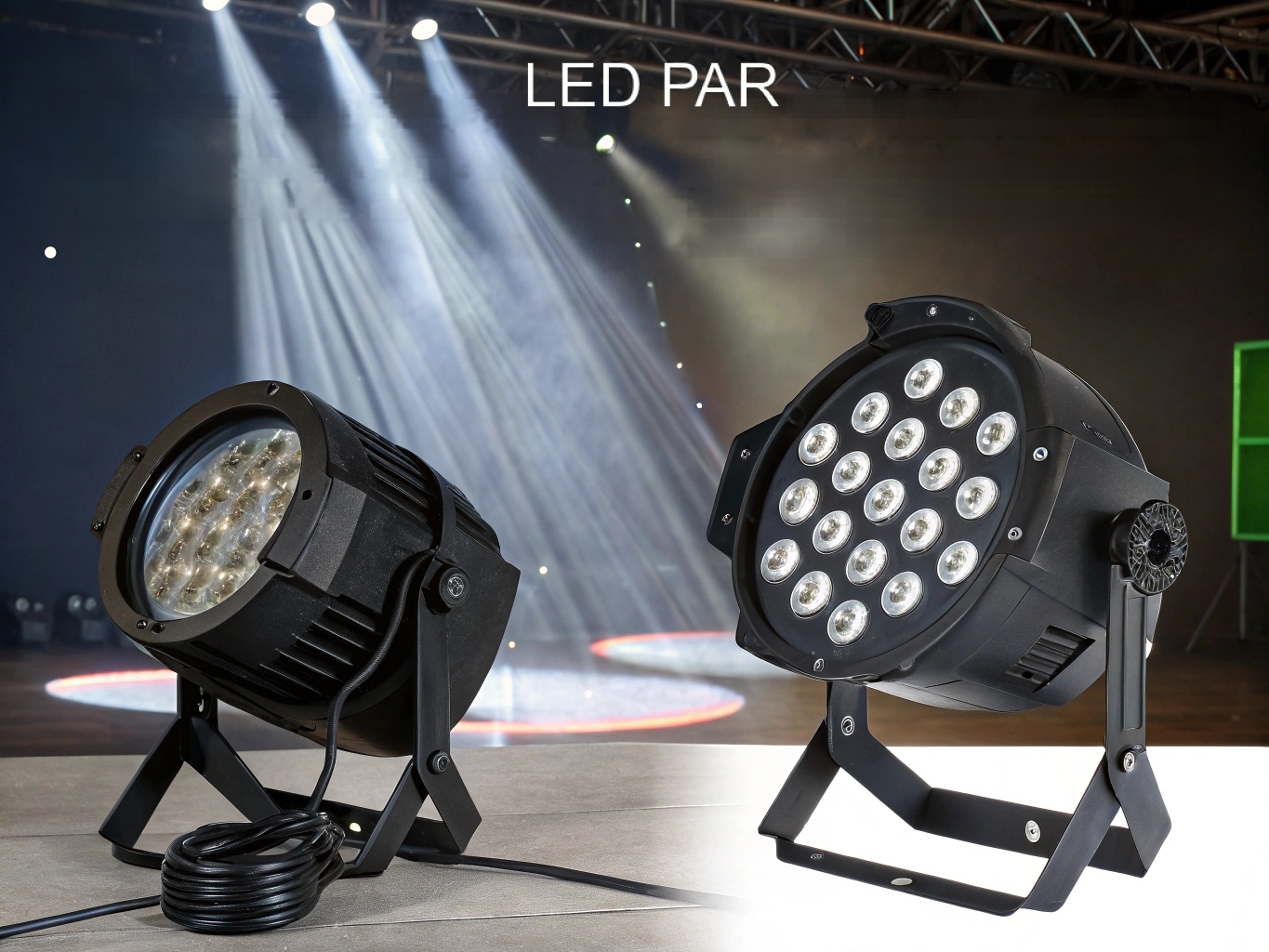
If I had to build a flexible lighting rig from scratch, these are the two fixtures I would start with. They represent the perfect balance of "quality is life" (the PAR's reliability) and "innovation is soul" (the Moving Head's versatility). The LED PAR is the undisputed king of static wash lighting. It is affordable, durable, and provides a powerful punch of color perfect for uplighting walls or washing a whole stage. The LED Moving Head is the swiss army knife of lighting. A single fixture can change color, position, focus, pattern (gobo), and size, allowing a designer to create an endless variety of looks from a single unit. For a technician, having a solid inventory of these two fixture types provides a foundation to handle almost any event imaginable.
The Workhorse vs. The All-in-One
| Fixture | The LED PAR Can | The LED Moving Head |
|---|---|---|
| Best For | Static color washes, uplighting, general illumination, band lighting. | Dynamic effects, aerial beams, gobo projection, spotlighting moving performers. |
| Pros | Highly cost-effective, extremely durable, simple to use, low power draw. | Extremely versatile, high visual impact, replaces multiple static lights. |
| Cons | Limited to a single function (wash), must be manually re-positioned. | Higher cost, more complex to program, has mechanical parts that can fail. |
Conclusion
Mastering LED lighting comes from understanding that the best stage look is a team effort. It's about combining key, wash, and effect lights, using the three-point rule, and choosing versatile workhorses.
-
Learn about this essential technique that transforms flat lighting into dynamic, professional visuals. ↩
-
Learn how Effect lights can add energy and excitement to your performances. ↩
-
Discover why visibility is crucial for audience engagement and how to achieve it effectively. ↩
-
Learn how Fill light complements Key light to create depth and detail in your lighting. ↩
You may also be interested in:
